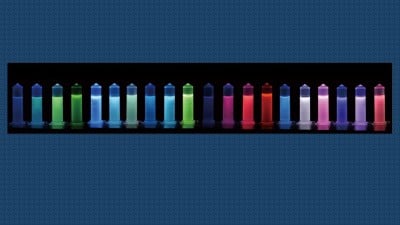Newswise — In a discovery shaped by more than a decade of steady, incremental effort rather than a dramatic breakthrough, scientists from the National University of Singapore (NUS) and their collaborators demonstrated that great ideas flourish when paired with patience.
Flashback to 2011: a small group of young researchers gathered around an aging optical bench at the NUS Department of Chemistry, watching a faint, flickering glow on a screen. Their goal seemed deceptively simple: make an insulating crystal emit light when electricity flowed through it. The challenge, however, was nearly impossible.
Lanthanide nanocrystals, known for their chemical stability and pinpoint colour purity, were insulators, notoriously resistant to electrical excitation. Over the next 14 years, a dedicated team of researchers hailing from NUS, Heilongjiang University, Tsinghua University’s Shenzhen International Graduate School, and City University of Hong Kong, pursued one idea with quiet determination, holding on to a simple belief: that even the most stubborn materials could one day shine.
Electroluminescence, the direct conversion of electricity into light, has powered modern civilisation, from phone screens to city skylines. But despite the success of organic emitters and quantum dots, researchers have long struggled to combine colour tunability, efficiency, and durability in a single system. Lanthanide nanocrystals appeared to hold that promise, if only they could be coaxed into conducting.
Bringing a new sparkle to lanthanide nanocrystals
The team’s breakthrough, reported in Nature on 19 November 2025, emerged from reimagining how light is generated. Instead of forcing current through insulating nanocrystals, the researchers wrapped them in specially-designed organic semiconductor molecules. These tailored ligands acted as molecular intermediaries, capturing electrons and holes under an electric field and transferring their energy to the lanthanide ions inside the crystal. The result was bright, stable light emission across the visible to near-infrared spectrum, achieved without altering the device structure.
Spectroscopic tests revealed ultrafast spin conversion and nearly 99 per cent triplet-energy transfer, marking an unprecedented level of control over exciton dynamics. Devices made with this hybrid platform were 76 times more efficient than earlier versions, and could shift their colour output from green to warm white to near-infrared just by changing the lanthanide dopant.
From a simple idea to a game-changing discovery
The idea that sparked this discovery began in 2011, when Professor Liu Xiaogang from NUS Department of Chemistry discussed a curious possibility with two young researchers in his group — Dr Xu Hui, who was then a postdoctoral fellow (now a professor at Heilongjiang University), and Han Sanyang, who was then a PhD student (now an associate professor at Tsinghua University). They wondered whether an insulating lanthanide nanocrystal could be made to emit light using electricity. Early experiments showed promise but yielded only faint glimmers and very low efficiency.
Prof Liu recounted, “At that time, the electricity current could barely produce any measurable emission, but we were fascinated by the possibility. It felt like chasing light trapped inside a stone.”
Refusing to give up, the researchers expanded their collaboration to integrate expertise in nanomaterials synthesis, molecular design, and device engineering. Each iteration – each small signal or spectral trace – brought new insights into how energy moved, or failed to move, across the interface between molecules and nanocrystals. Over the years, patience gradually replaced frustration, and what began as a speculative idea evolved into a profound understanding of how molecular ligands can mediate charge transfer in insulating materials.
“It took us more than 14 years to make an insulator shine. The light we see today comes not just from the device, but from years of persistence, collaboration, and the belief that even an insulator can sparkle if its energy landscape well understood,” Prof Liu elaborated.
He added, “On a personal level, I am truly grateful to have been part of this long journey. Seeing an idea endure setbacks and gradually take shape through teamwork has been one of the most meaningful experiences of my career.”

